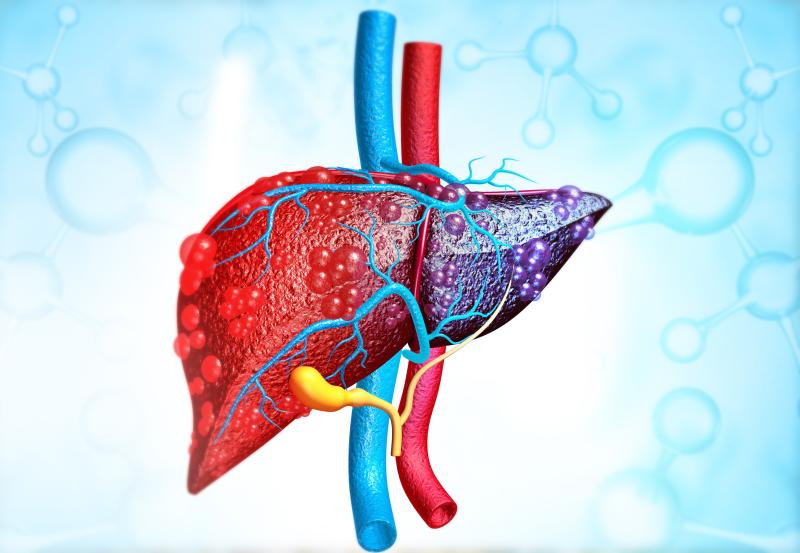
Patients with nonalcoholic fatty liver disease (NAFLD) may develop significant fibrosis in the absence of nonalcoholic steatohepatitis (NASH), with risk factors including fasting hyperglycaemia, severe steatosis, mild inflammation and the PNPLA3 I148M variant, according to a recent study.
Researchers looked at 1,738 patients (44.9 percent with severe obesity) in a cross-sectional liver biopsy cohort. Biopsy specimens had been analysed for the presence of NASH (steatosis [≥5 percent of hepatocytes], hepatocellular ballooning and lobular inflammation).
In the cohort, 571 patients (32.9 percent) had NASH and 389 had significant fibrosis (22.4 percent). Significant fibrosis was more prevalent in patients with vs without NASH (45.0 percent vs 11.3 percent). However, of the patients with significant fibrosis, as many as 132 (33.9 percent) had no NASH and 39 (10 percent) had no lobular inflammation.
The dissociation between NASH and fibrosis was stronger in patients with severe obesity (p<0.005). Steatosis, ballooning and lobular inflammation all showed an independent association with significant fibrosis (p<0.001), while age, adiposity, fasting hyperglycaemia and the PNPLA3 I148M variant were associated with fibrosis.
In the subgroup of patients without NASH, risk factors for significant fibrosis included steatosis grade and the PNPLA3 I148M variant. Factors associated with fibrosis were age, fasting hyperglycaemia, ballooning and inflammation.
In the validation cohort of 118 consecutive patients with NAFLD who underwent sequential liver biopsies, NASH was not present in 16 of 47 patients (34.0 percent) with clinically significant fibrosis. Among those with fibrosis but without NASH, fasting hyperglycaemia and more severe steatosis were associated with worsening of fibrosis (based on later biopsies; p=0.016).
The present data point to the presence of significant fibrosis in higher than expected proportion of patients with NAFLD, possibly owing to fluctuating disease activity and/or the underlying mechanisms of disease progression that may be partially different in different subgroups, according to researchers.